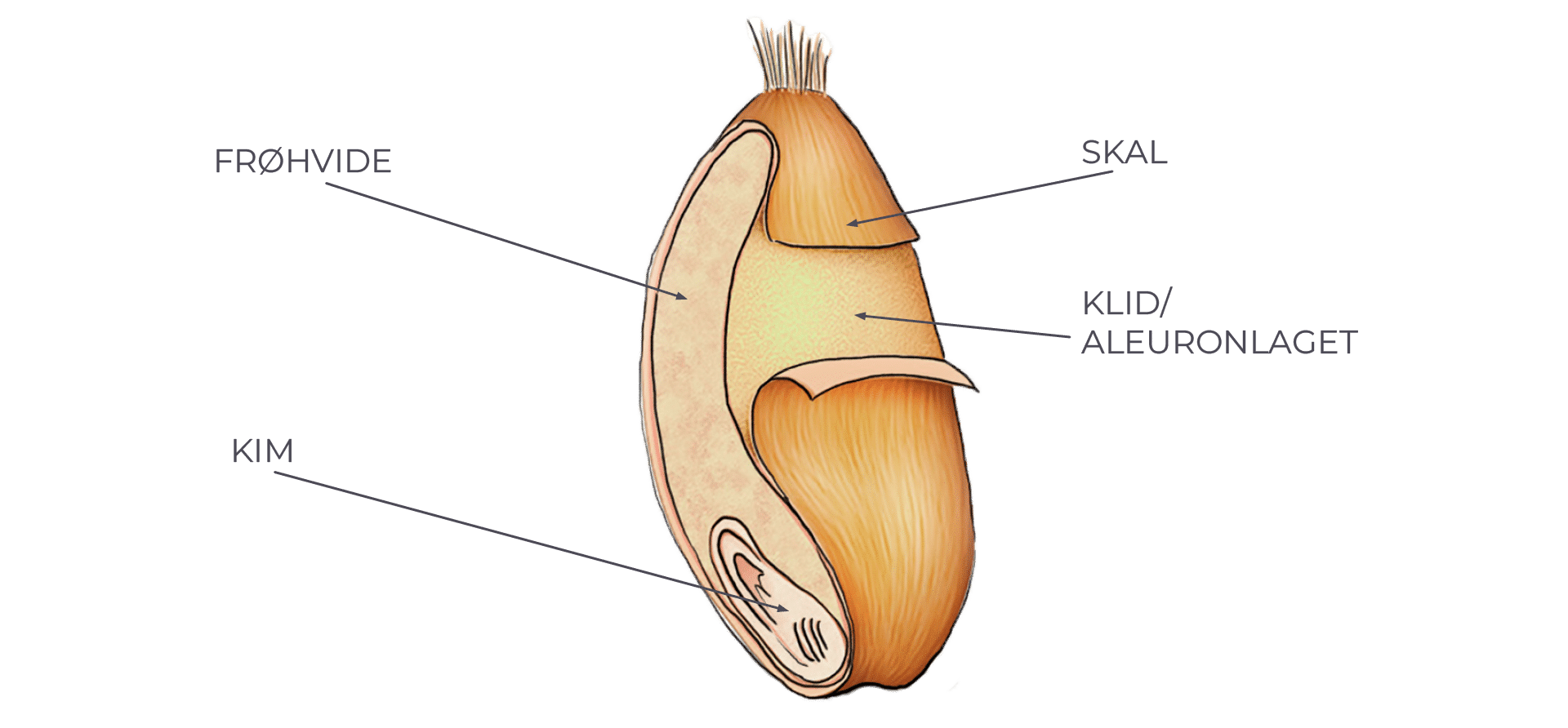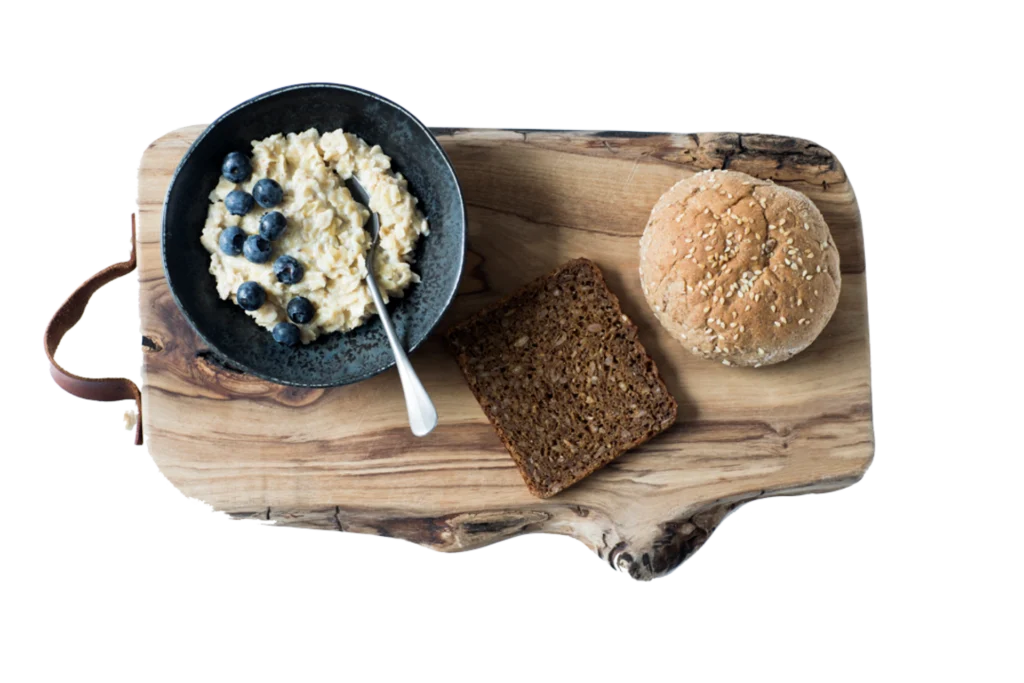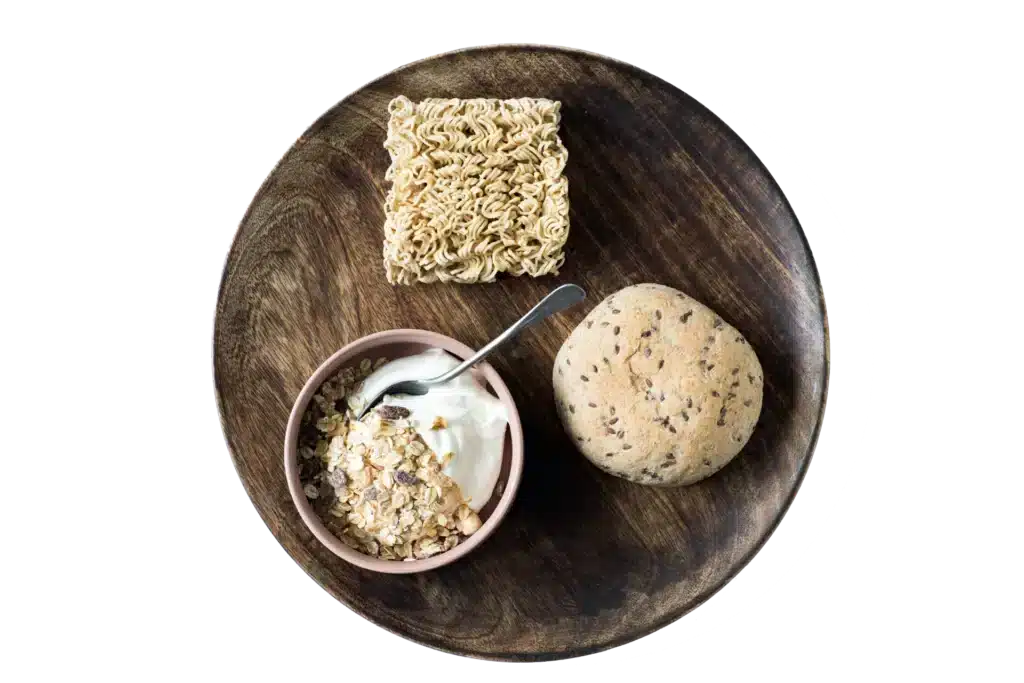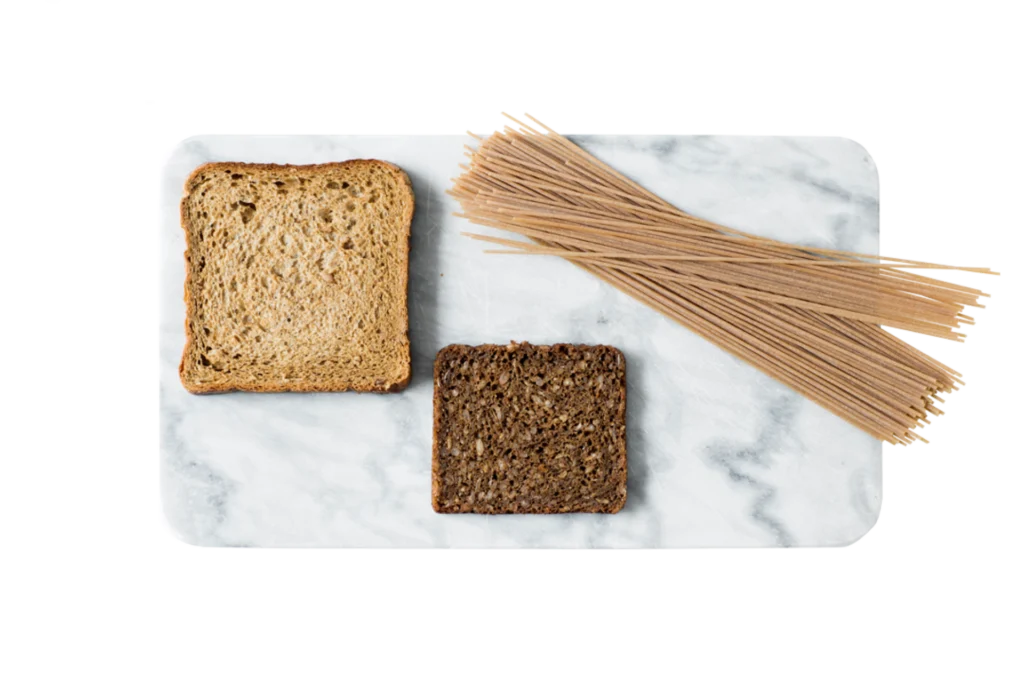Whole grain means using the entire grain, including the germ and bran where most fibers, vitamins, and minerals are located. Whole grains can be whole or processed kernels They can be cracked, cut, or ground into whole grain flour. The important thing is that all parts of the kernel are included, including the bran and germ. This is where most vitamins, minerals, and dietary fibers are found. Whole grains provide both flavor and texture. Grain products, including whole grain products, are also among the foods with the lowest carbon footprint. Look for the whole grain logo when shopping.
Below is a list of what constitutes whole grain. We recommend looking for the orange whole grain logo when shopping, as this ensures a high content of whole grain and a low content of salt, fat, and sugar. You can find the whole grain logo on flour, flakes, grains, cracked kernels, rice, breakfast cereals, porridge, bread/whole grain bread, crispbread, crusts, breadcrumbs, pasta, and noodles.

The Danish Veterinary and Food Administration recommends – Eat food with whole grains. That’s the official dietary advice on whole grains. It is recommended to consume at least 75 grams of whole grain per day. Click below to learn more about the dietary guidelines.
Here are four examples, each containing 75 grams of whole grain. Whole grains can be eaten for breakfast, lunch, and dinner. Here, you can find various recipes and tips for incorporating more whole grains into your diet.




H. C. Andersens Boulevard,
1553 København V
CVR: 16077593
© 2024 Fuldkorn – Designed by Aveo web&marketing